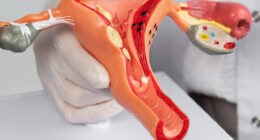Diphtheria fever is a serious bacterial infection that continues to pose health risks across the globe, particularly in areas where vaccination coverage is low. Caused by Corynebacterium diphtheriae, this illness can lead to life-threatening complications if not promptly diagnosed and managed. In this comprehensive guide, we explore everything about diphtheria fever, from its symptoms and causes to preventive strategies and modern treatments.
What is Diphtheria Fever?
Diphtheria is a highly contagious bacterial disease primarily affecting the mucous membranes of the respiratory tract and occasionally the skin. The bacteria release a powerful toxin that causes tissue damage and systemic symptoms. While it has become rare in many developed countries due to widespread immunisation, outbreaks still occur in regions with poor public health infrastructure.
Causes and Transmission of Diphtheria
Diphtheria is transmitted through respiratory droplets from coughing, sneezing, or close contact with an infected individual. The bacteria can also spread via contaminated personal items, surfaces, or through open wounds. Crowded environments, poor sanitation, and low vaccination rates significantly contribute to its spread.
Key transmission methods include:
- Airborne droplets
- Direct contact with lesions
- Shared utensils or towels
- Unvaccinated individuals in endemic areas
Recognising the Symptoms of Diphtheria Fever
Early identification of diphtheria symptoms is crucial for timely treatment. The symptoms typically appear 2–5 days after exposure and vary depending on the site of infection. Respiratory diphtheria is the most dangerous form, but skin diphtheria is also common in some regions.

Symptoms include:
- High fever (38°C or above)
- Sore throat with a thick, grey or white coating (pseudomembrane)
- Swollen lymph nodes, especially in the neck (bull neck appearance)
- Difficulty breathing or swallowing
- Nasal discharge (sometimes bloody)
- Hoarseness or loss of voice
- Rapid heartbeat
General weakness and fatigue
If untreated, the diphtheria toxin may spread into the bloodstream, leading to severe complications such as:
- Myocarditis (inflammation of the heart muscle)
- Paralysis (due to nerve damage)
- Respiratory failure
- Kidney damage
- Cutaneous (Skin) Diphtheria
In addition to respiratory infections, diphtheria can affect the skin, particularly in tropical climates. Skin diphtheria presents as:
- Painful, non-healing ulcers
- Redness and swelling around wounds
- Formation of a grey membrane over the affected skin
Though less dangerous than respiratory diphtheria, cutaneous cases can still transmit the infection to others and require medical intervention.
How Diphtheria is Diagnosed
Accurate and early diagnosis of diphtheria is essential for effective treatment. Medical professionals typically rely on:
- Physical examination of throat and skin
- Throat swabs to culture Corynebacterium diphtheriae
- Polymerase Chain Reaction (PCR) tests for bacterial DNA
- Toxin tests to detect diphtheria toxin production
Laboratory confirmation ensures appropriate treatment measures and public health actions, such as notifying local health authorities and tracing contacts.
Prevention of Diphtheria
- The Role of Vaccination: The most effective way to prevent diphtheria is through vaccination, particularly the DTP (Diphtheria, Tetanus, Pertussis) vaccine.
- Immunisation Schedule: Primary series: 3 doses during infancy (typically at 2, 4, and 6 months)
- Booster doses: At 15–18 months, 4–6 years, and every 10 years thereafter
High vaccination coverage has led to a dramatic decline in cases worldwide. Nevertheless, booster compliance is essential, especially for adults travelling to or living in endemic regions.
Additional preventive measures
- Avoiding close contact with infected individuals
- Proper hygiene and handwashing
- Sterilisation of wounds and cuts
- Prompt reporting of suspected cases to public health authorities
Treatment Options for Diphtheria Fever
Diphtheria is a medical emergency and requires immediate hospitalisation. Treatment involves a combination of medications and supportive care.
Core components of treatment
1. Diphtheria Antitoxin
The antitoxin neutralises the circulating diphtheria toxin. It is most effective when administered early and may be derived from equine sources. A skin sensitivity test is conducted before injection to avoid allergic reactions.
2. Antibiotic Therapy
To eradicate the bacteria and prevent further transmission, doctors commonly prescribe:
Erythromycin
Penicillin G
Azithromycin (in some cases)
3. Supportive Care
- Oxygen therapy for respiratory distress
- Mechanical ventilation in severe cases
- Intravenous fluids and electrolytes
- Cardiac monitoring if myocarditis is suspected
Patients are typically kept in isolation until cultures confirm they are no longer contagious.
Complications and Long-Term Effects
Even with prompt treatment, complications of diphtheria can be life-threatening. Common sequelae include:
- Heart damage (due to myocarditis)
- Paralysis of limbs, palate, or diaphragm
- Respiratory obstruction
- Death, especially in young children and elderly patients
The case fatality rate can range from 5% to 10%, but this may rise significantly in areas with delayed diagnosis or lack of access to antitoxin and antibiotics.
Global Status and Epidemiology of Diphtheria
Despite major advances, diphtheria remains endemic in several countries including parts of Asia, Africa, and South America. The World Health Organization (WHO) continues to monitor outbreaks and recommends routine vaccination programmes as part of national immunisation schedules.
Countries experiencing political instability, poor healthcare infrastructure, and vaccine hesitancy are particularly vulnerable to resurgences of diphtheria.
What To Do If You Suspect Diphtheria
If you or someone you know exhibits symptoms consistent with diphtheria, seek emergency medical attention immediately. Early intervention can prevent severe complications and reduce the risk of spread to others.
Until a definitive diagnosis is made:
- Isolate the individual
- Avoid sharing household items
- Notify close contacts
- Inform local healthcare providers about the suspicion
Conclusion
Vigilance and Vaccination Are Key
Diphtheria fever, though preventable, can quickly become a life-threatening condition. Through routine immunisation, public awareness, and timely access to medical care, we can continue to minimise the risks associated with this formidable disease. Remaining vigilant, especially when travelling or during outbreaks, ensures both personal safety and the well-being of the wider community.









